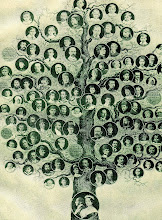The storied Valley of Virginia (also known as the Appalachian Valley) is bounded by the Blue Ridge on the east and, for most of its length, by the West Virginia border on the west. The Valley follows the 360-mile course of the Potomac River from about Harper's Ferry, where the Valley's width is 35 miles, to the Tennessee line in the south, where it extends in width to 100 miles. Samuel Kercheval's history of the Valley of Virginia, published originally in 1909, concentrates upon this region from 1732 through the Revolutionary War. Most of the Valley's original colonial settlers were Pennsylvanians like Joist Hite, who, with his family and sons-in-law, settled in the vicinity of Winchester, Virginia. Hite's exploits--like those of Benjamin Allen, Jacob Stoever, John and Isaac Vanmeter, and numerous others--are sketched in detail in Kercheval's meandering narrative. Also covered in substantial detail are the settlements and customs of the indigenous peoples of the region, such as the Catawbas and Delawares, whose lives were forever altered by the aforementioned newcomers.
By 1754, on the eve of the French and Indian War, German and Scotch-Irish settlement of the Valley had become so widespread as to rouse the ire of the native peoples. Indeed, the raids, massacres, and fateful conflicts that would decide future control of the Valley, such as Lord Dunmore's War, comprise fully half of the author's writings, a number of which were reconstructed from interviews with descendants of the pioneers who took part in various depredations. The balance of the work describes life on the frontier, especially housing, furniture, and diet; the establishment of towns like Strasburg, Staunton, Romney, Harper's Ferry, and Morgantown; the inception of religious denominations, topography, and natural landmarks; and medicinal springs and other remedies.
PRICE: $9.97
Free Shipping
Use the BUY IT NOW button below. Any questions? Please email me at
genealogy_books@yahoo.com
This book is on cd, in pdf format. Adobe Reader is used to view the pages images, scanned from the original book onto your computer and is Available for free download from their site: www.adobe.com
Wednesday, December 30, 2009
Subscribe to:
Posts (Atom)
